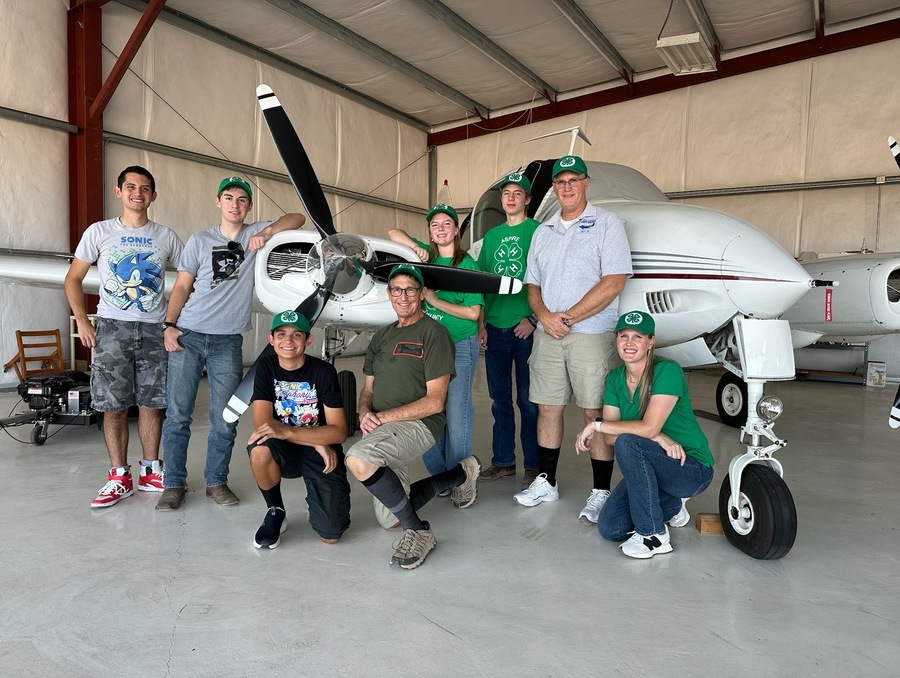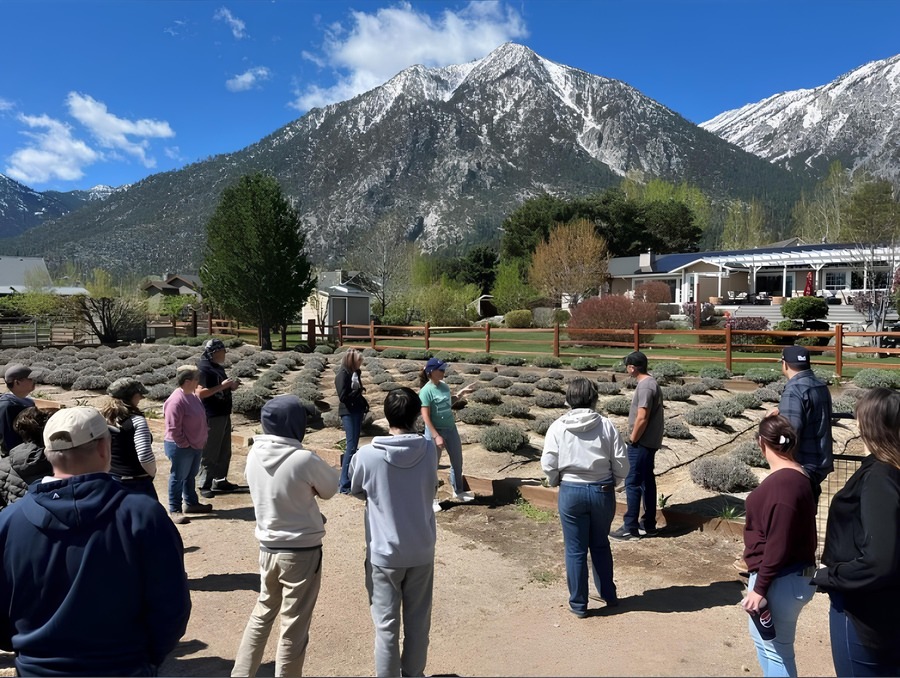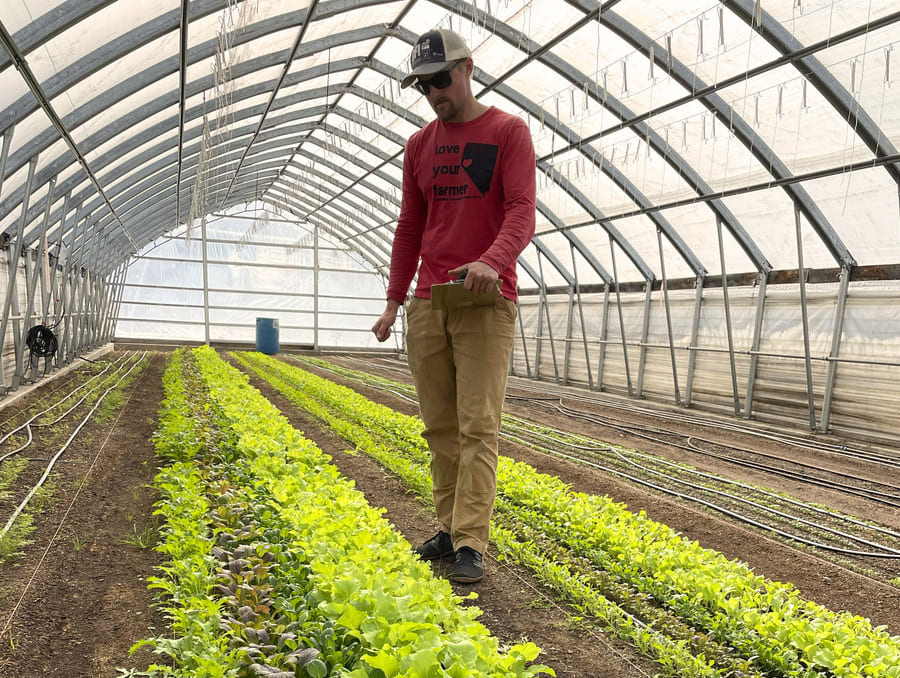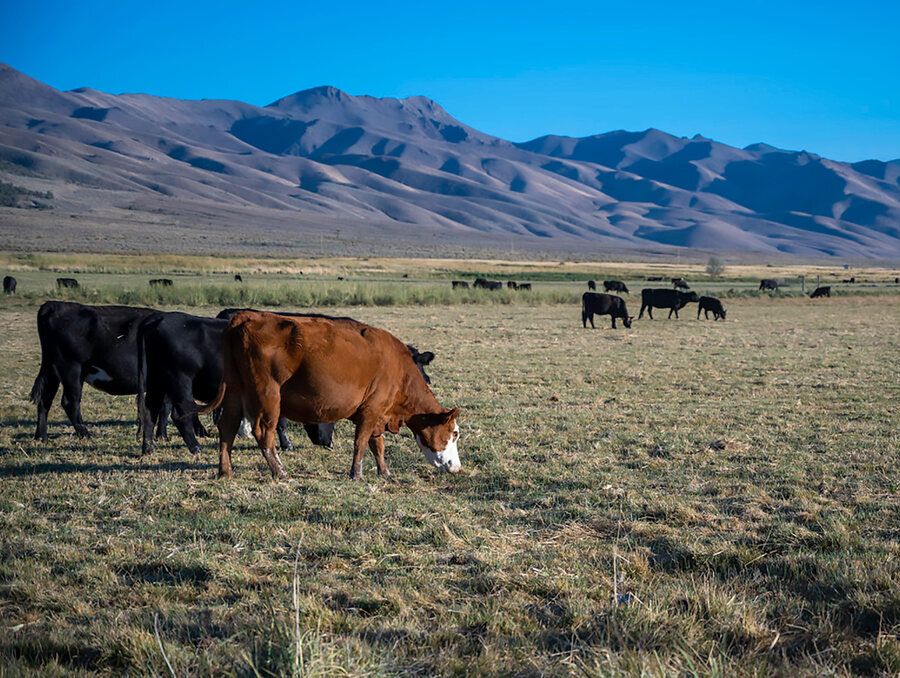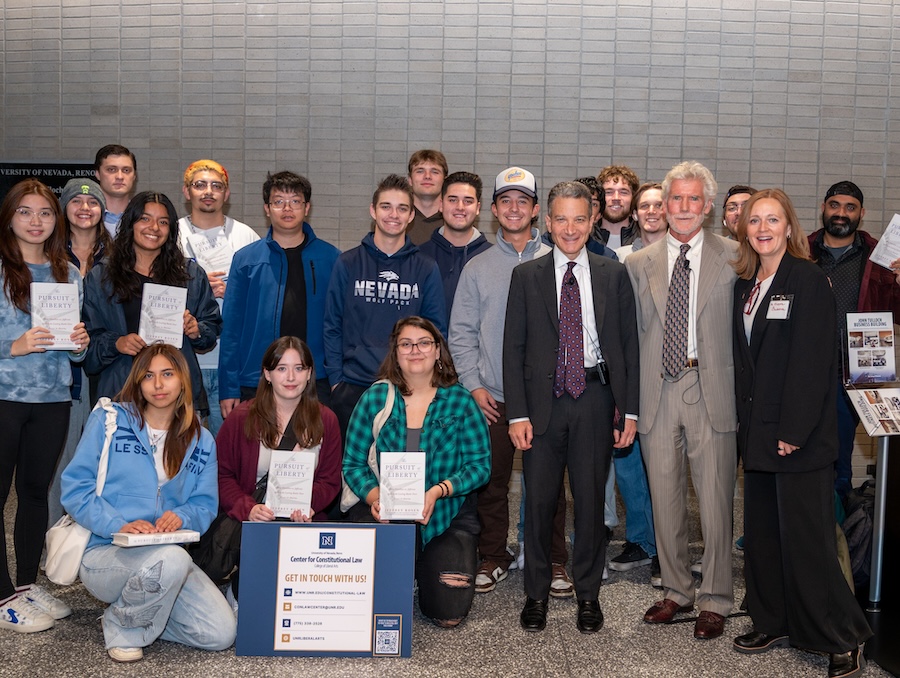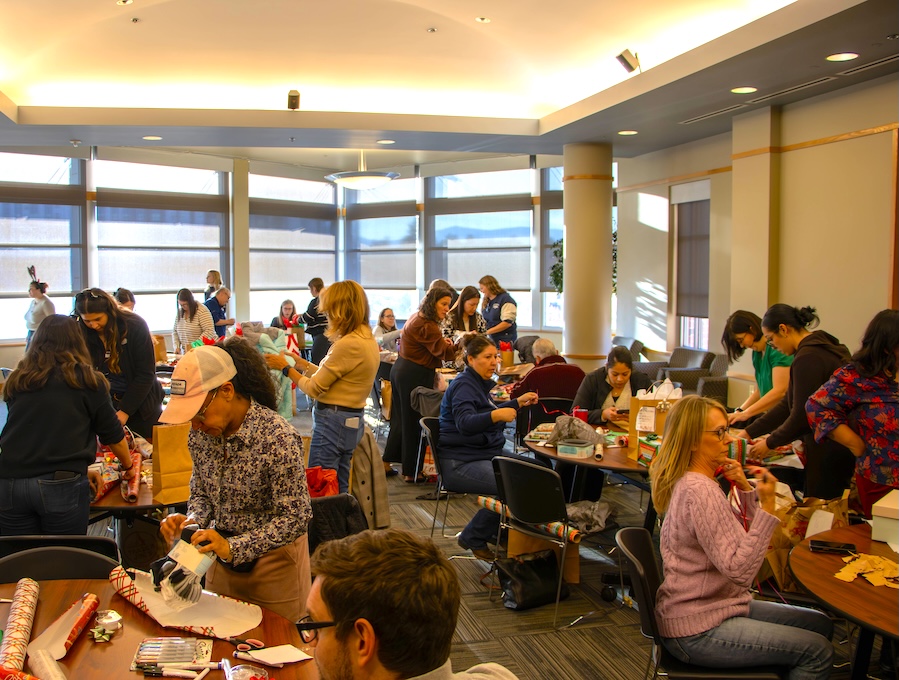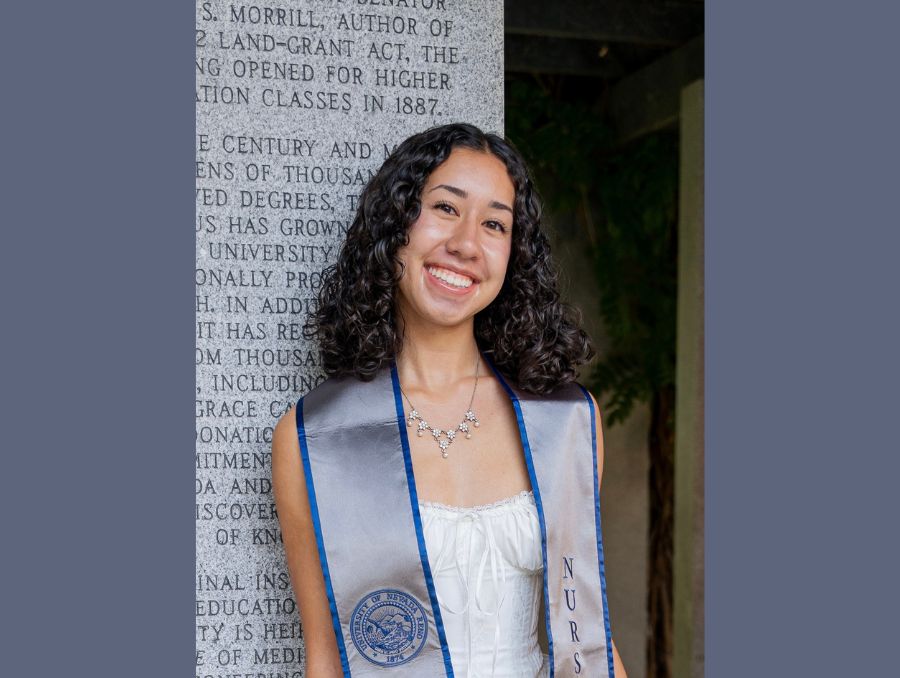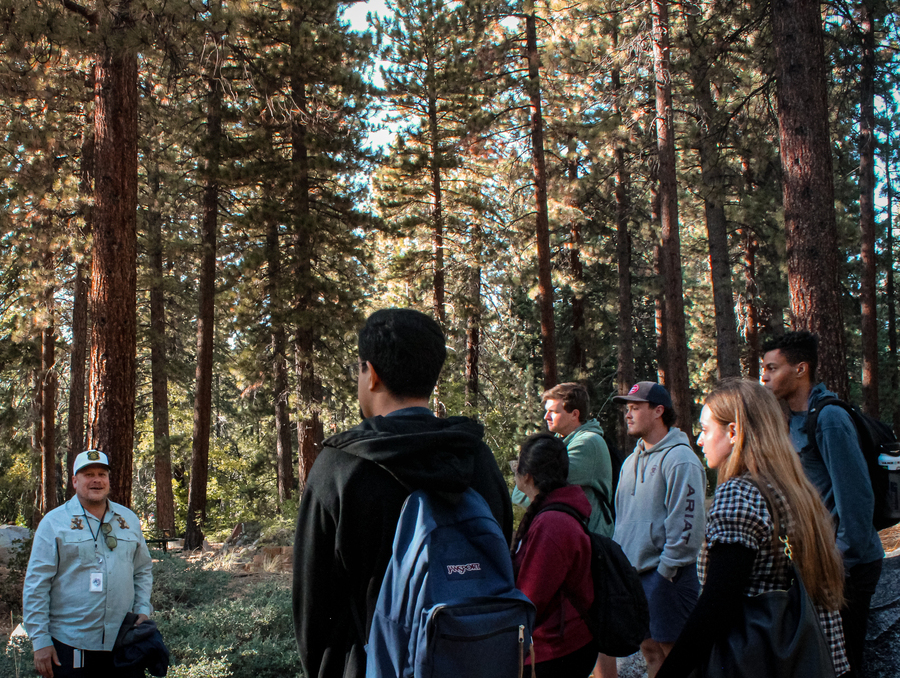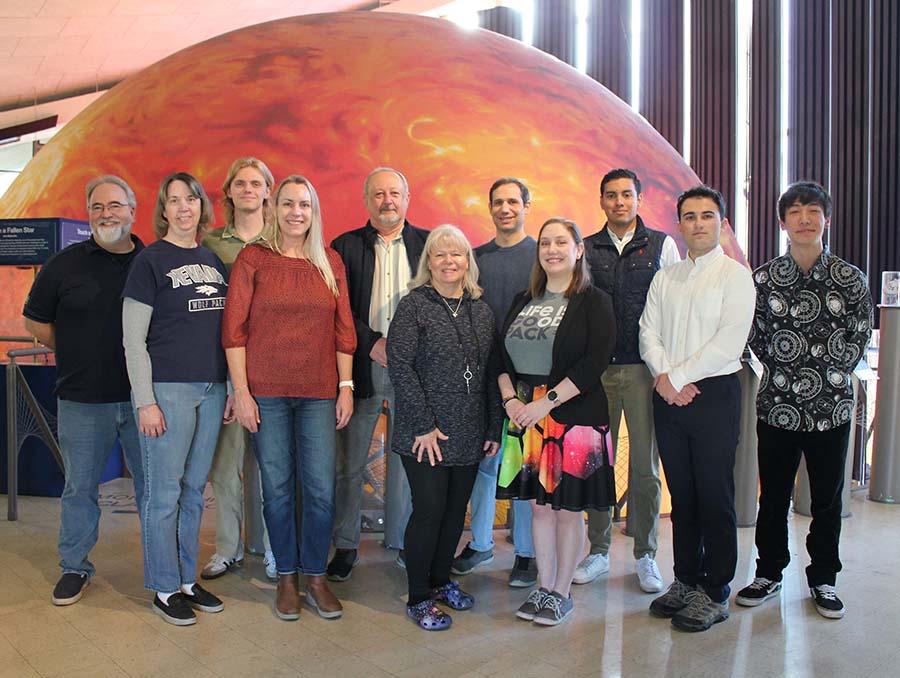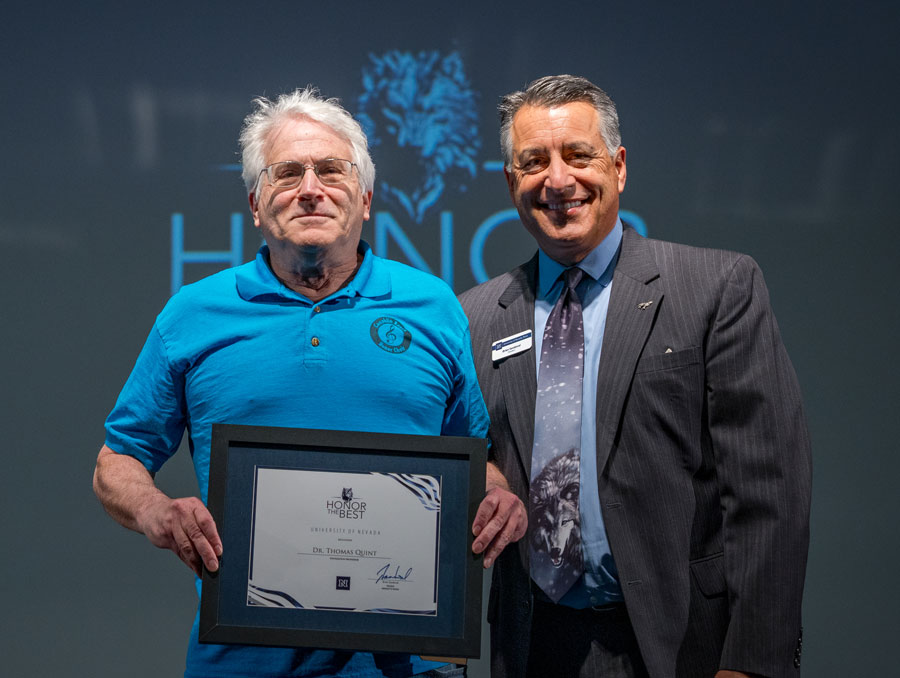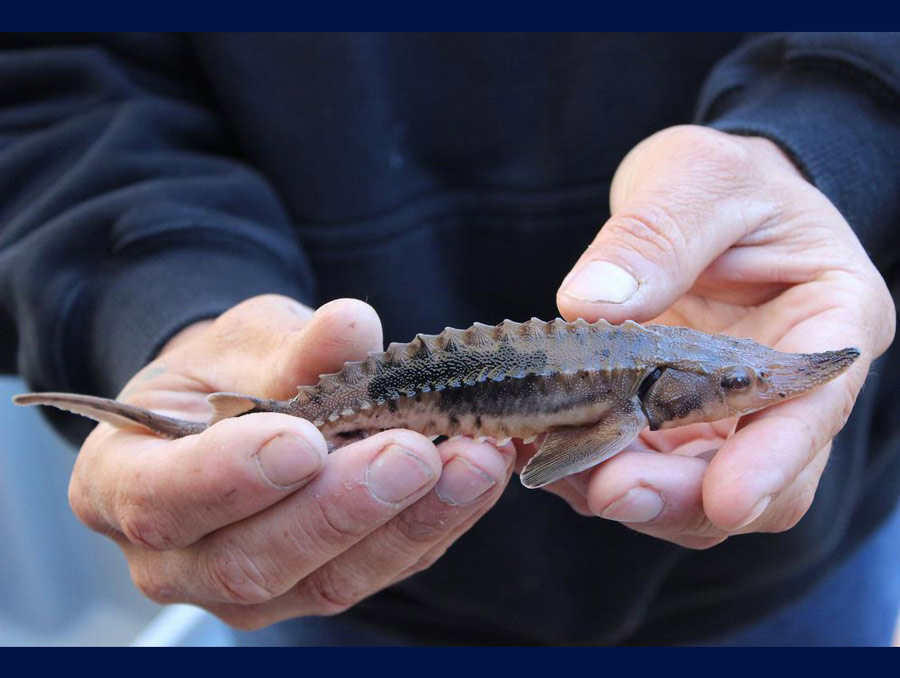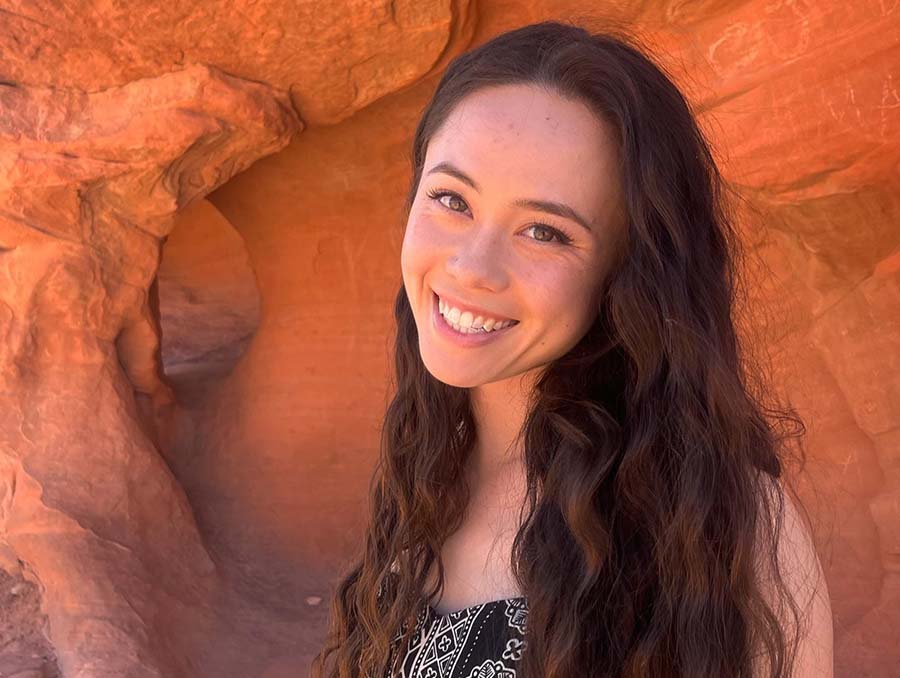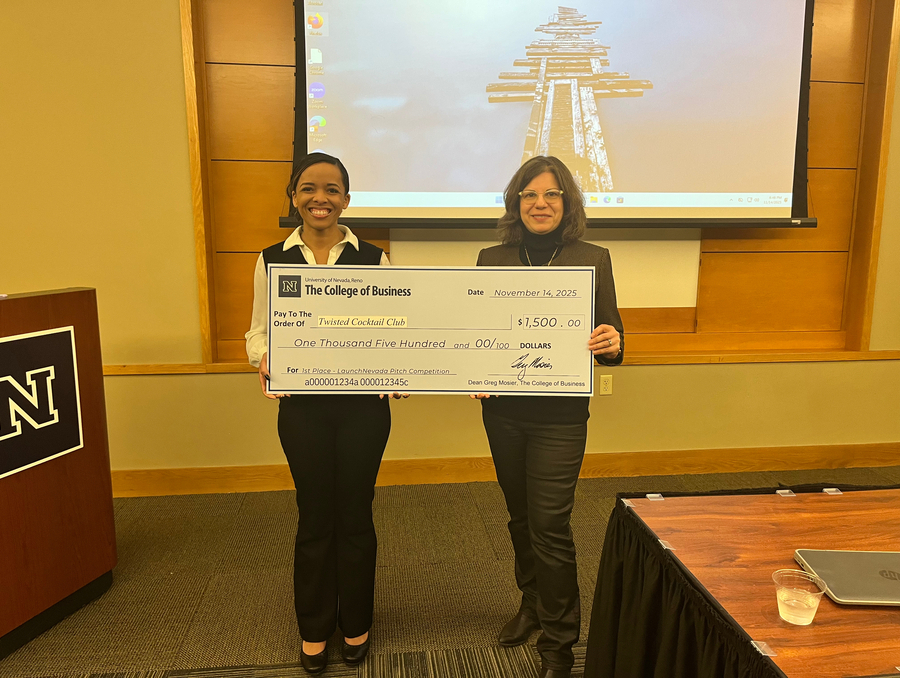Images of farm animals and agriculture may spring to mind when you hear someone mention 4-H, but today’s 4-H Youth Development Program is about so much more. One club in northeast Clark County is showing youth that the sky’s the limit with the pilot program that hit the runway last year.
When University of Nevada, Reno Extension’s 4-H Youth Development Program in Moapa Valley launched its youth aviation pilot program last fall, it was just an ambitious idea: to spark students’ interest in flight and create a pathway to a pilot’s license. Today, the program has not only taken flight, but is soaring, with its first member, 19-year-old Talon Newsom, earning his private pilot certificate, and with new partnerships, expanded community involvement, and a growing group of youth eager to follow in his footsteps. As part of the celebration for National 4-H Week, Oct. 5 – 11, Extension shares Newsom’s achievements and the club’s flight path.
From dream to reality
The program was born from a conversation during a hike, when Newsom, a member of the 4-H Teen Leadership Corps in Moapa Valley, shared his dream of becoming a pilot with Extension 4-H Program Officer Dianna Walker, but he didn’t see a clear path forward.
Walker began to explore how the 4-H Program could support Newsom’s ambition. She discovered that the U.S. is facing a major shortage of pilots and wondered how 4-H might fit into solving this problem. In what may just have been kismet, weeks later, local pilot and community leader Tim DeBarardinis reached out to Extension about starting a youth aviation initiative.
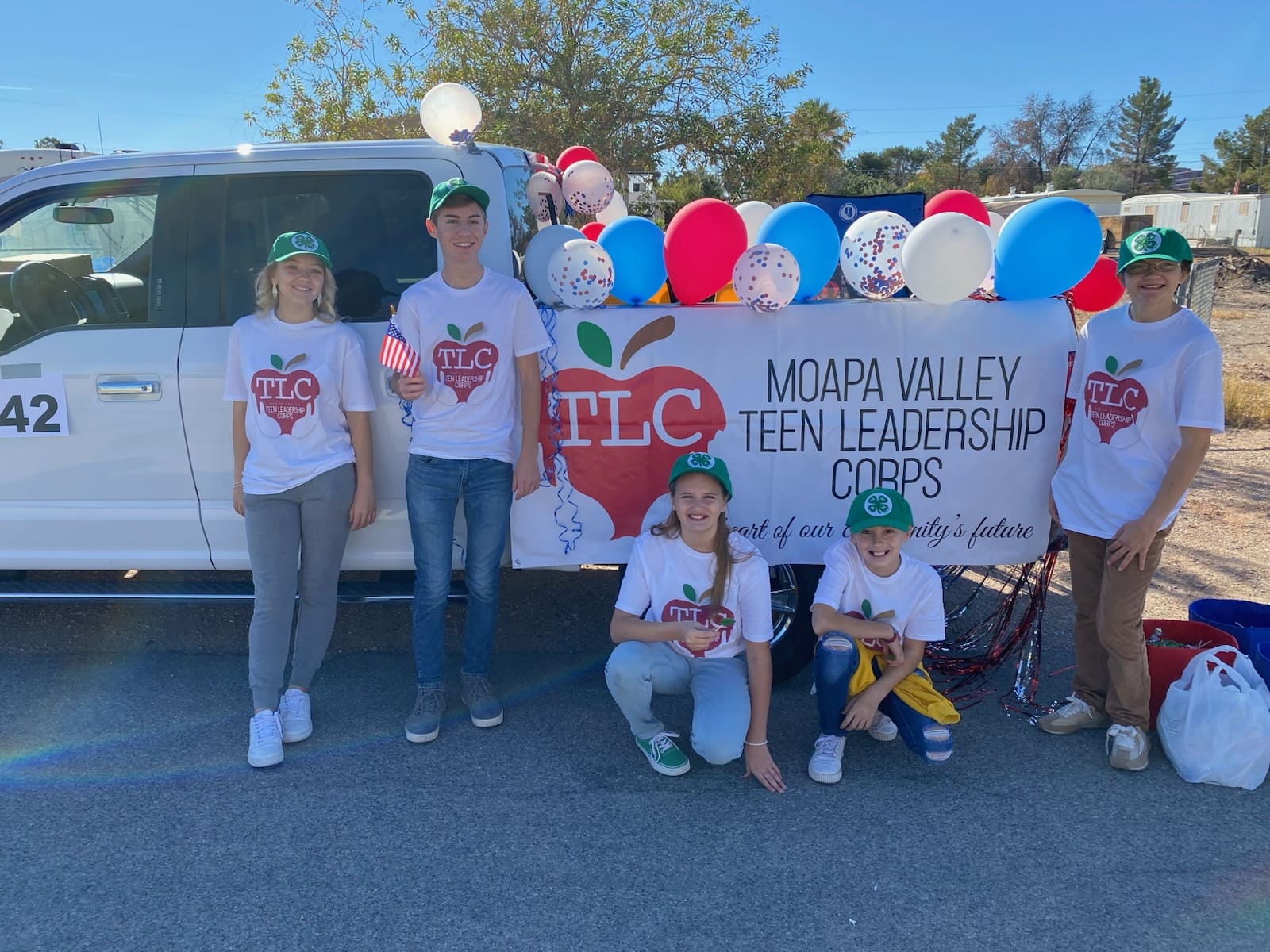
Walker saw this as an opportunity for 4-H, which teaches leadership skills and civic engagement and uses STEM education to engage youth, to develop a program that would afford participants the opportunity to graduate with their pilot’s license.
“When Tim reached out about the aviation club, I thought, ‘Alright, we’re supposed to be doing this,’” Walker said.
From there, a partnership with the Experimental Aircraft Association (EAA), the Perkins Field Flying Club, and Moapa Valley High School began to take shape, and the 4-H Youth Aviation Club emerged.
Building a program and a community
What started as a small club has evolved into a structured program blending ground school, flight simulators and in-air instruction. Local pilots volunteer countless hours mentoring students, providing access to planes and teaching aviation fundamentals.
Greg Witter, president of the local EAA chapter, emphasized the value of this partnership.
“It’s definitely a good partnership,” Witter said. “I don’t see us having the success that we have without EAA or without the 4-H component. [Without EAA] 4-H wouldn’t have the flying aspect, curriculum or airplanes. Without 4-H we wouldn’t have access to the kids, the simulators and the support in the community.”
The club’s successful community partnership also includes retired pilot and instructor Charles “Chuck” Crickmer, a member of the Perkins Field Flying club who donated use of his Cessna 152 to help youth log hours.
“My goal is to help young people in a rural area pursue flying without the $60,000 price tag of flight school, but still with quality education and preparation for FAA check rides,” Crickmer said.
First graduate and a new inspiration
Newsom, who says he’s been a 4-H member his whole childhood, started in 4-H with livestock projects, including chickens, rabbits and swine, before eventually becoming the first male member of the 4-H Teen Leadership Corps. Now, as the first member of the 4-H Youth Aviation Club, he’s the first member to earn his private pilot certificate. His dream of training to become a pilot has become a reality.
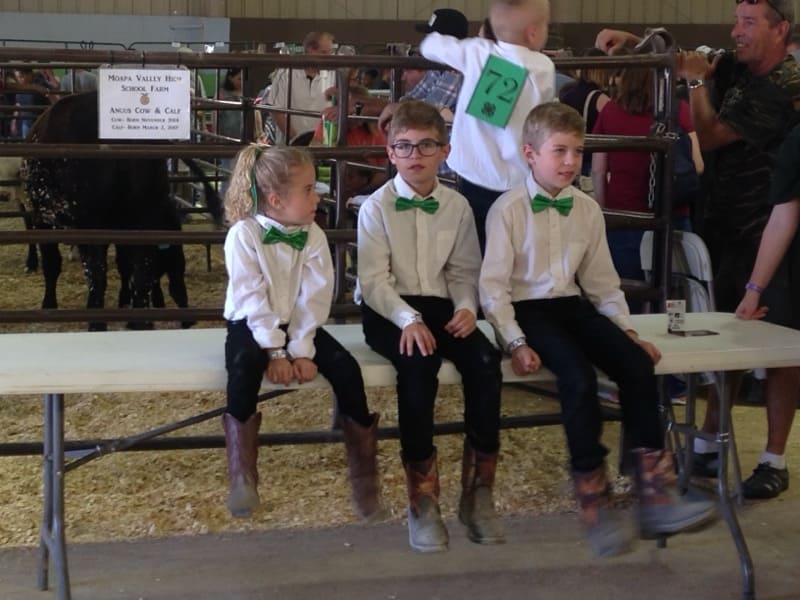
“I grew up right across the street from the airport, watching planes take off every morning,” Newsom said. “I thought it was really cool and wanted to get into that, but I just didn’t know how.”
Newsom’s journey through the program has already inspired peers in the club. He earned his private pilot certificate earlier this year, balancing long construction shifts with studying and simulator practice.
“Discipline and time management were big lessons for me,” Newsom said. “There were days I left for work at 4:30 a.m. and came back late, but I still had to study and show up at the airport.”
Additionally, he said he improved his communication and resource management skills and increased his confidence.
Newsom passed his written exam on May 6 and took his first solo flight just 10 days later. He shared that he recently took a short trip to Mesquite with his mom as his first passenger. Newsom has already begun working on his instrument rating and hopes to pursue a commercial pilot’s license.
“When other youth see Talon achieve this, they know it’s possible for them too,” Witter said.
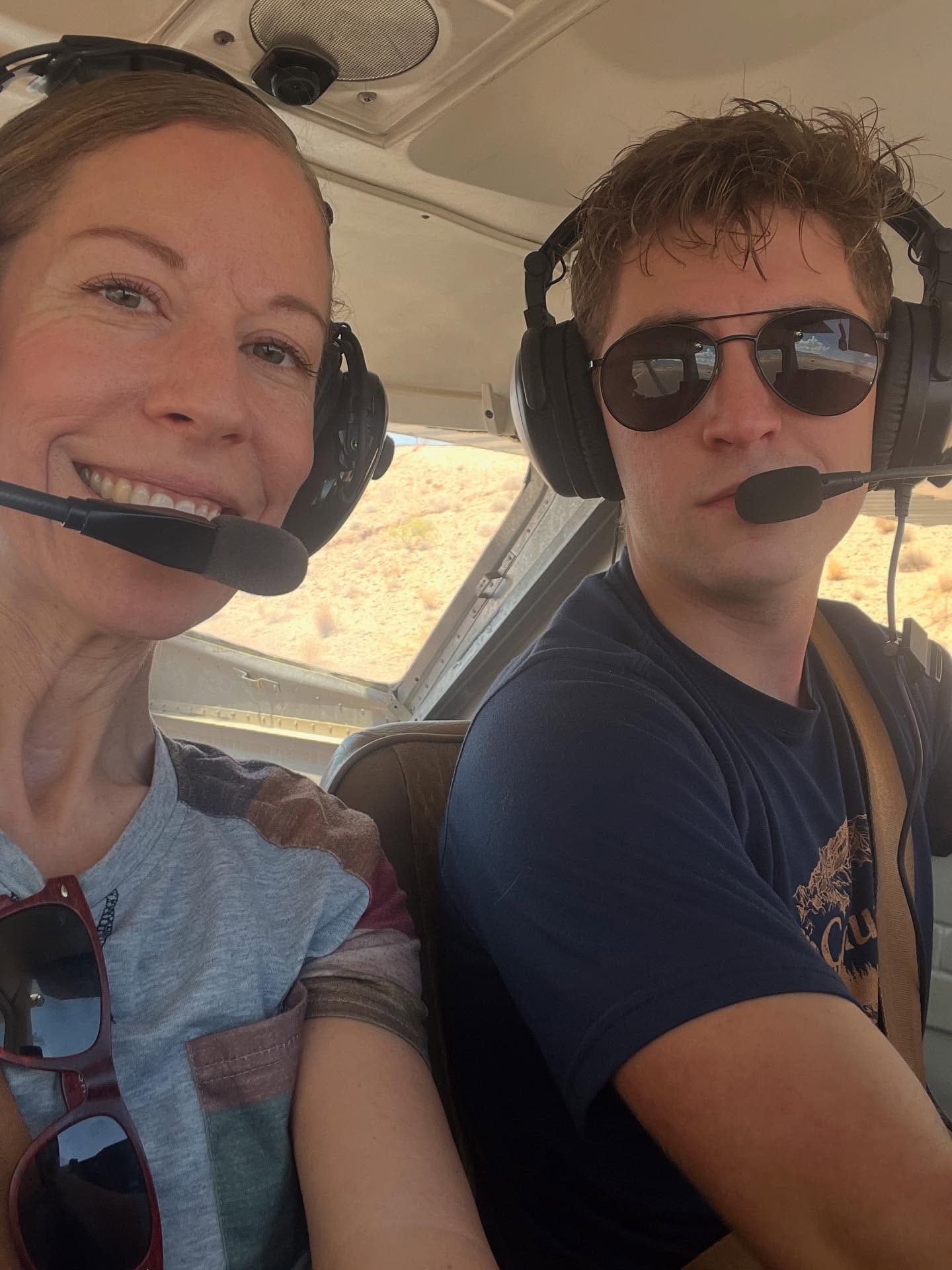
Growth in Logandale and Mesquite
Originally based in Logandale, interest in the club has grown so much that the 4-H Aviation Club now has expanded to include Mesquite. The expansion doubled the number of active participants, with more than a dozen students regularly engaged in each location.
“The spark from the kids drives us,” Walker said. “At first, we thought everyone would start with drone certifications, but they just wanted to fly airplanes. So, we adapted, because 4-H is about meeting youth where their passion is.”
Still, drones remain an important entry point. Plans are underway to launch a drone program for younger participants not yet old enough to pursue private pilot certificates, creating a full pipeline from STEM education to flight training.
However, with the growing interest from youth, Walker said there is a great need for more pilot volunteers, particularly in the Mesquite and Bunkerville area.
“Pilots who are willing to share their knowledge and experience play a vital role in helping our 4-H Youth Aviation Program take flight,” Walker said.
Community support, scholarships and simulators
The program’s success has been fueled by generous community involvement. Volunteer pilots donate their time, fuel and aircraft, while local families have established scholarships to offset costs of training, fuel and exams. One benefactor contributed $10,000 for STEM scholarships, funding awards for high school seniors interested in aviation careers.
“You don’t have to want to be a pilot to benefit,” DeBarardinis said. “Aviation touches engineering, mechanics, design and technology, and we welcome any youth with STEM interests. There’s a place for them here.”
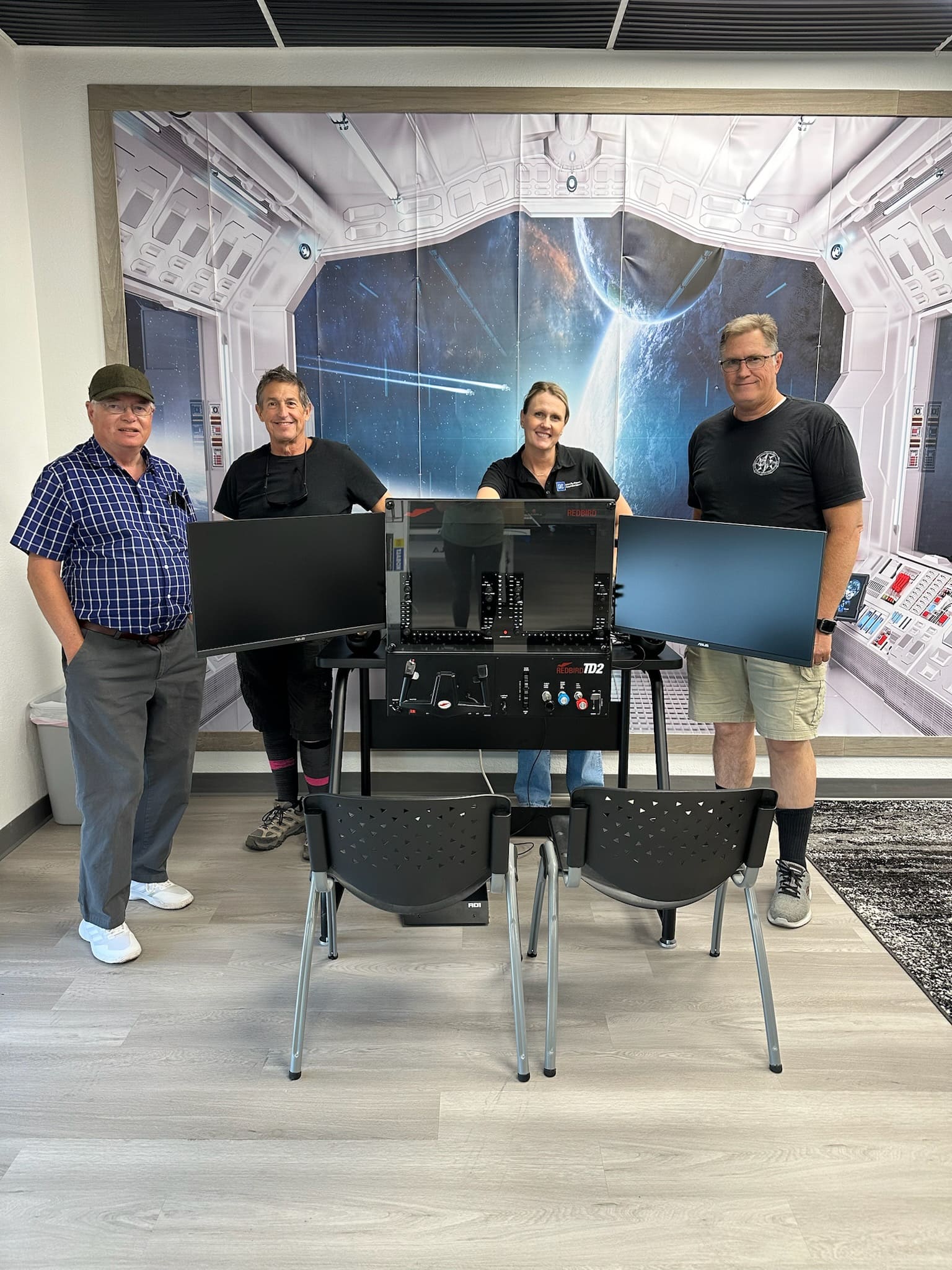
To help 4-H youth in this program reach even more new heights, Extension recently purchased two state-of-the-art Redbird Flight simulators. One simulator is already installed at the Extension’s 4-H Teen Innovation Center in Mesquite. The other will soon be housed at the Moapa Valley High School College of Southern Nevada building.
“These simulators are a game-changer for local youth and pilots,” Walker said. “They provide realistic, hands-on training that helps aspiring pilots sharpen their skills and gain confidence without the high cost of fuel or in-air instruction. By practicing in the simulators first, students can become more adept and prepared before ever leaving the ground, ultimately saving both time and money on their path to becoming licensed pilots.”
Walker said that in addition to serving youth, the simulators are also available for use by adult pilots who volunteer with the program. This allows them to work toward various FAA certifications, providing ongoing training opportunities to support and strengthen the skills of those who generously give their time to mentor the next generation of aviators.
Looking Ahead
Extension is working toward certifying the Logandale site as an FAA knowledge testing center, removing another barrier for rural students. Leaders hope the model will spread to other states, multiplying its impact on both youth opportunity and the national pilot shortage.
“For me, this program is about more than flying,” Witter reflected. “It’s about giving young people, and even adults in our community, something meaningful and exciting to be part of. We’ve already seen it change lives.”
Newsom agreed.
“Even if you don’t want do it for a career, just go for it,” Newsom said. “You’ll gain so much more than a certificate. You’ll learn life skills along the way.”
For more information about the 4-H Youth Aviation Club, contact Walker at diannaw@unr.edu.
Nationwide, the 4-H Youth Development Program reaches nearly 6 million young people across the U.S. through experiences that develop critical life skills. Through the 4-H Beyond Ready national initiative, 4-H aims to increase that number to 10 million youth annually by 2030. 4-H is the youth development program of our nation’s Cooperative Extension System and USDA and serves every county and parish in the U.S. through a network of 110 public universities and more than 3,000 local Extension offices. Globally, 4-H collaborates with independent programs to empower 1 million youth in 50 countries. The research-backed 4-H experience grows young people who are four times more likely to contribute to their communities; two times more likely to have the goal of being a leader; two times more likely to report living life with intentionality and purpose; and three times more likely to participate in community service.
